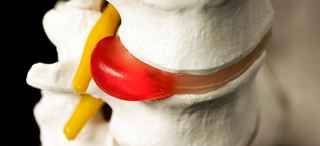The specialized spine doctors at UT Southwestern Spine Center are dedicated to helping patients overcome spine problems, providing comprehensive care and access to the latest and most effective treatments.
Disc degeneration is primarily caused by the natural process of aging. The spinal discs lose their flexibility and elasticity, making them more prone to tearing or rupturing even with minor strains or twists. As people age, the discs in the spine dry out and weaken, increasing the likelihood of herniation.





